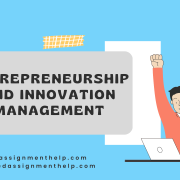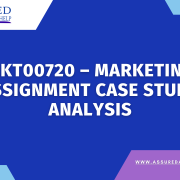Introduction:
A strong applicable business strategy helps an organization to establish a direction for them, that helps, in making wise business decisions. The essay topic will focus on five primary business strategy developments tool available and adopted in the industry and explain how they are implemented in their corresponding fields. later, five strategies have been chosen for organizations, which are PESTEL, Porter’s Five Forces, SWOT, Porter’s Generic Strategy, and Ansoff Matrix, The application of these tools will allow the organizations to gain ascendency in the competitive market.
Discussion
The following section will focus on explaining each tool of market strategy and its merits and demerits. The application of those tools to the similar companies will depict the understanding of the organization of that tool.
TOOL 1: SWOT analysis
The chosen theory for analysis is SWOT. Refer to Appendix 1
Theory Review
The theory imposes some significant benefits for the organization such as it is extremely low on cost tool and anyone who has a vast knowledge of an organization can perform a SWOT analysis. The examination focus on the most critical aspects of the business, which can affect it as it addresses the weakness of the organizations on which the organization can improve and capitalize on the opportunity quadrant. but, a SWOT examine cannot describe a detailed explanation of complex scenarios such as it can only define those options, which properly falls into strengths or weakness but is not able to address a two-side factor where one point can be both weakness and strength.
Application of Tool
Woolworths Limited has been chosen as the company upon which SWOT analysis will be done as depicted below:
| Strengths | Weakness |
|
|
| Opportunities | Threats |
|
|
TOOL 2: PESTEL analysis
The chosen theory for analysis is PESTEL. Referto Appendix 2
Theory Review
PESTEL analysis gives a very easy framework to understand the situation . It involves cross-functional expertise in order to chalk out the external environment and assist the management in reducing the impact of possible threats in the existing environment as well as in a new one in case of expanding the business. On the contrary, the analysis is not applicable in the long term as the variables might change in the marketplace(Salar and Salar, 2014).
Application of Tool
Spark Furniture has been chosen as the company upon which PESTEL analysis will be done as depicted below:
| Political | Economic |
|
|
| Social | Technological |
|
|
| Legal | Environmental |
|
|
TOOL 3: Porte’s five forces
Theory Review
Porter’s five forces mark the primary five variables which define the competition in the industry and understanding these five factors can help an organization to take a careful measurement and take competitive advantages as well. But, the theory only gives a snapshot of the current market situation, which needs to be continuously updated. Avoiding this factor will lead to the data being obsolete as the market in the contemporary era is highly fluctuating, and very few factors are now represented statically.
Application of Tool
Bosch Australia Limited has been chosen as the company upon which Porter’s five forces examine will be done as represented below
This examination observes the five factors as mentioned below:
Supplier power of Bosch Suppliers:
- Usage of more than 500 suppliers makes all of them effectively expendables
- the manufactured of physical products in third world countries provides less leverage to bargain
Competitive rivalry facing Bosch:
- A considerable amount of competition from Hitachi and KitchenAid
- A various product portfolio helped the organization to stay ached in the competition
The threat of new entrance of Bosch:
- The low threat for new market entry as the industry is saturated and dominated by wealthy organizations
The threat of substitution of Bosch:
- Low threat of exchange because of the various business portfolio which operates in home appliances and car components
Buyer power of Bosch:
- Less capacity for consumers to bargain as they have to use some device based services
- the Competition in the current market provides consumers with bargaining the price with different companies
TOOL 4: Ansoff Matrix
The chosen theory for examination is the Ansoff Matrix. define to Appendix 4
Theory Review
Ansoff matrix forces the business planners to measure the expected risks involved in a particular direction and lays out possible growth strategies. These strategies assist the organization to build its aims and objectives to be presented to the stakeholders.
However, the theory fails to suggest the changes required in a diverse strategy because this is only a theoretical model. Ansoff matrix does not take into account the outward competitors because of that, accurate predictions are missing from the theory
Application of Tool
Coca-cola has been chosen as the company upon which Ansoff matrix analysis will be done as depicted below
- Market penetration: This includes an attempt to increase the market share within the existing marketplace by selling a new product to the consumers or finding new consumers which Coca-cola has done with the help of promotion element of the marketing mix
- Product development: This part includes creating a new product to meet the need of the consumers of the existing marketplace such as the new products introduced by Coca-cola over the years
- Market Development: This stage includes developing a new group of buyers in order to sell an existing product. The example would be the release of Cock Zero in 2005. The product was the same as Diet Coke(Teigeler and Hahne,2014). Diversification: This includes the introduction of a new category product in existing portfolio which Coca-cola has done over the years
TOOL 5: Porter’s Generic Strategies:
theory for examination is Porter’s Generic Strategies. Refer to Appendix 5
Theory Review
This strategy enables the company mainly to focus on its cost leadership which not only helps it to reduce the total expenditure but also allows it to set a margin so that it can keep a competitive price of the product in case there is a price war in the market. Even if this is not the situation, the company can still keep the same price and make a profit which allows it to work in a proper way.
Application of Tool
Here, Jet2 Holidays has been chosen as it has used the theory and has earned profit as well. With the help of this theory, the company has been able to calculate the unnecessary costs that are associated with the production. Along with this the managers or the senior staffs only travel in economy class and not in business class, as this is an additional expense for the company and it does not add to the profit in anyways. The company has designed its product in such a way that it suits the consumers’ usage and avoids any unnecessary advertisement or product design. With the help of these strategies, Jet2 Holidays is able to save a lot on its expenses which add to the profit of the company.
Conclusion
it can fastly be included that business strategies have vital importance in order to build the vision and mission of the organization also avoid risk to make it a long-term organization. The main four strategies, which have been discussed in the essay, depict versatility and cover the entire aspect of industrial strategies. The application of these four strategies in the organization from different industries depicts the various benefits and demerits of the theories.
References:
Darroch, J., 2014. Ansoff’s Growth Matrix—In Detail. In Why Marketing to Women Doesn’t Work (pp. 131-147). Palgrave Macmillan, London.
Jiang, R., Mao, C., Hou, L., Wu, C. and Tan, J., 2018. A SWOT analysis for promoting off-site construction under the backdrop of China’s new urbanisation. Journal of Cleaner Production, 173, pp.225-234.
Matt, C., Hess, T. and Benlian, A., 2015.Digital transformation strategies. Business & Information Systems Engineering, 57(5), pp.339-343.
Rothaermel, F.T., 2015. Strategic management.McGraw-Hill Education.
Salar, M. and Salar, O., 2014. Determining pros and cons of franchising by using swot analysis. Procedia-Social and Behavioral Sciences, 122, pp.515-519.
Tansey, P., Spillane, J.P. and Meng, X., 2014. Linking response strategies adopted by construction firms during the 2007 economic recession to Porter’s generic strategies. Construction management and economics, 32(7-8), pp.705-724.
Teigeler, J. and Hahne, A.K., 2014. Market Analysis of Red Bull based on the countries Germany, Switzerland and Austria.
Vaiarelli, A., Cimadomo, D., Trabucco, E., Vallefuoco, R., Buffo, L., Dusi, L., Fiorini, F., Barnocchi, N., Bulletti, F.M., Rienzi, L. and Ubaldi, F.M., 2018. Double stimulation in the same ovarian cycle (DuoStim) to maximize the number of oocytes retrieved from poor prognosis patients: a multicentre experience and SWOT analysis. Frontiers in Endocrinology, 9, p.317.
Appendix
Appendix 1:
SWOT analysis: SWOT analysis takes place when an organization looks into the company’s internal issues in order to rectify those and make the most out of the opportunities. The four quadrants of this analysis evaluate the Strengths, Weakness, Opportunities, and Threats of the organization.

Figure: SWOT analysis
Source: (Vaiarelli et al. 2018)
Appendix 2:
PESTEL analysis: PESTEL analysis gives an organization a bird’s eye view of a particular environment where the organization is situated or trying to expand. The expanded form of PESTEL denotes P as Political, E as Economic, S for Social, T for Technological, L for Legal and E for Environmental factors. Thus, it can be said that this analysis covers the six critical external aspects that can affect an organization.
Figure: PESTEL analysis
Sources: As created by author
Appendix 3:
Porter’s Five Forces: Porter’s five forces are used to analyze the industry structure, and corporate strategy of an organization is needed to be evaluated. The five forces are used in order to calculate the competitive intensity and profitability. The five factors are competition in the industry, the potential of the new entrance in industry, powers of suppliers, customer power and the threat of substitute products.

Figure: Porter’s Five Forces
Sources: (Rothaermel, 2015)
Appendix 4:
Ansoff matrix: Ansoff matrix suggests whether a business should grow depending on the same product in a new market or new products in the same market. This matrix suggests different growth strategies to choose from in order to grow. Each strategy suggests different directions for the organization such as Market penetration, Market development, Product development, and Diversification.
Figure: Ansoff matrix
Source: (Darroch, 2014)

Appendix 5:
Porter’s Generic strategies: Michael Porter developed a set of three strategies that a company could use in order to get competitive advantages. The three strategies are cost leadership, differentiation, and focus. The theory suggests keeping the price of the product the same while minimizing the production cost from every segment of a company. After that, the profit margin will get high which will provide sustainability to the company in case of a price war. Differentiation strategy suggests that an organization should have a varied list of the product portfolio in order to address the need of the consumers. Focus strategy depicts concentrating on a narrow segment of the targeted market and fulfilling their needs and surviving by focusing on that entirely.
Figure: Porter’s Generic Strategy
Source: (Tansey, Spillane and Meng, 2014)









